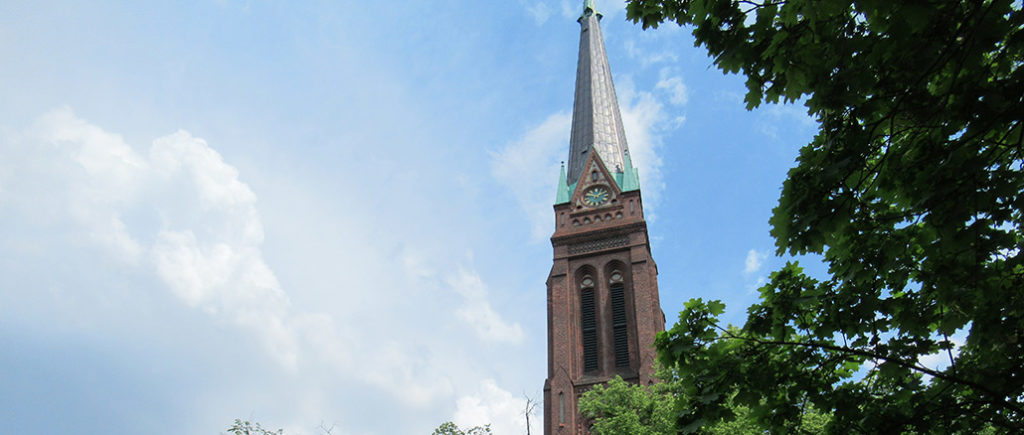
How did the congregation and ministers of Christian churches react to the persecution of Jewish fellow citizens?
Rejection of democracy, exaggerated nationalism, and religiously founded anti-Semitism were as common among Christians as other groups, and the Nazi ideology found adherents among Christians, too. A time of discord, conflict, and mistrust of each other began.
State and church became more and more enmeshed. A swastika flag was purchased here when the Nazis took power. However, there was also a countermovement: The church council rejected the request to replace the Emperor’s picture in the church hall with a portrait of Hitler, for example.
The Emergency Covenant of Pastors and the Confessing Church took an even clearer stand. Across the Reich, staff and church members joined together to criticise and work against the “Gleichschaltung”, the process of Nazification. They often committed to taking responsibility for people who were being persecuted under the Nuremberg Race Laws. Herbert Link, one of five ministers at the Heilandskirche, signed the statement and commitment of the Emergency Covenant of Pastors in 1933. In 1934, his colleague Kamlah also switched sides and became active in the Confessing Church. However, their acts of charity were not well-received by the informers of the authorities. Clergymen active in church politics were not desired. After the start of the war, they were conscripted as soldiers: Link in December 1939 and Kamlah in January 1940. Resistance became less and less possible.

